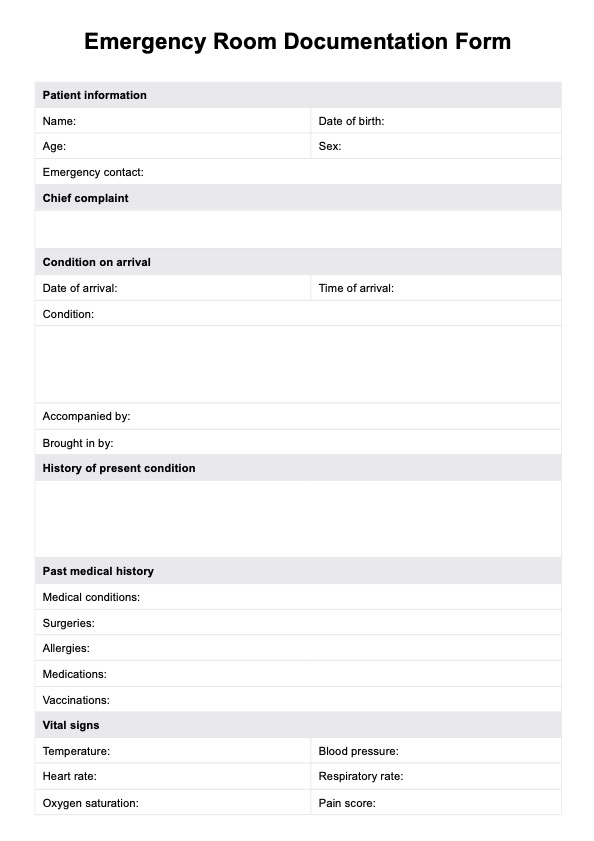Documentation in the emergency department involves recording all relevant patient information, such as medical history, symptoms, diagnoses, treatments, and outcomes, to ensure comprehensive and accurate patient care.

Emergency Room Documentation Templates
Improve your emergency patient's care and medical documentation with our Emergency Room Documentation Templates. Access it for free!
Use Template
Emergency Room Documentation Templates Template
Commonly asked questions
To document in emergency medicine, you must capture essential information, including patient details, clinical findings, treatment plans, and any procedures performed, ensuring clarity and consistency.
Emergency Room Documentation Templates can be used by various healthcare professionals, including doctors, nurses, physician assistants, and administrative staff.
EHR and practice management software
Get started for free
*No credit card required
Free
$0/usd
Unlimited clients
Telehealth
1GB of storage
Client portal text
Automated billing and online payments











